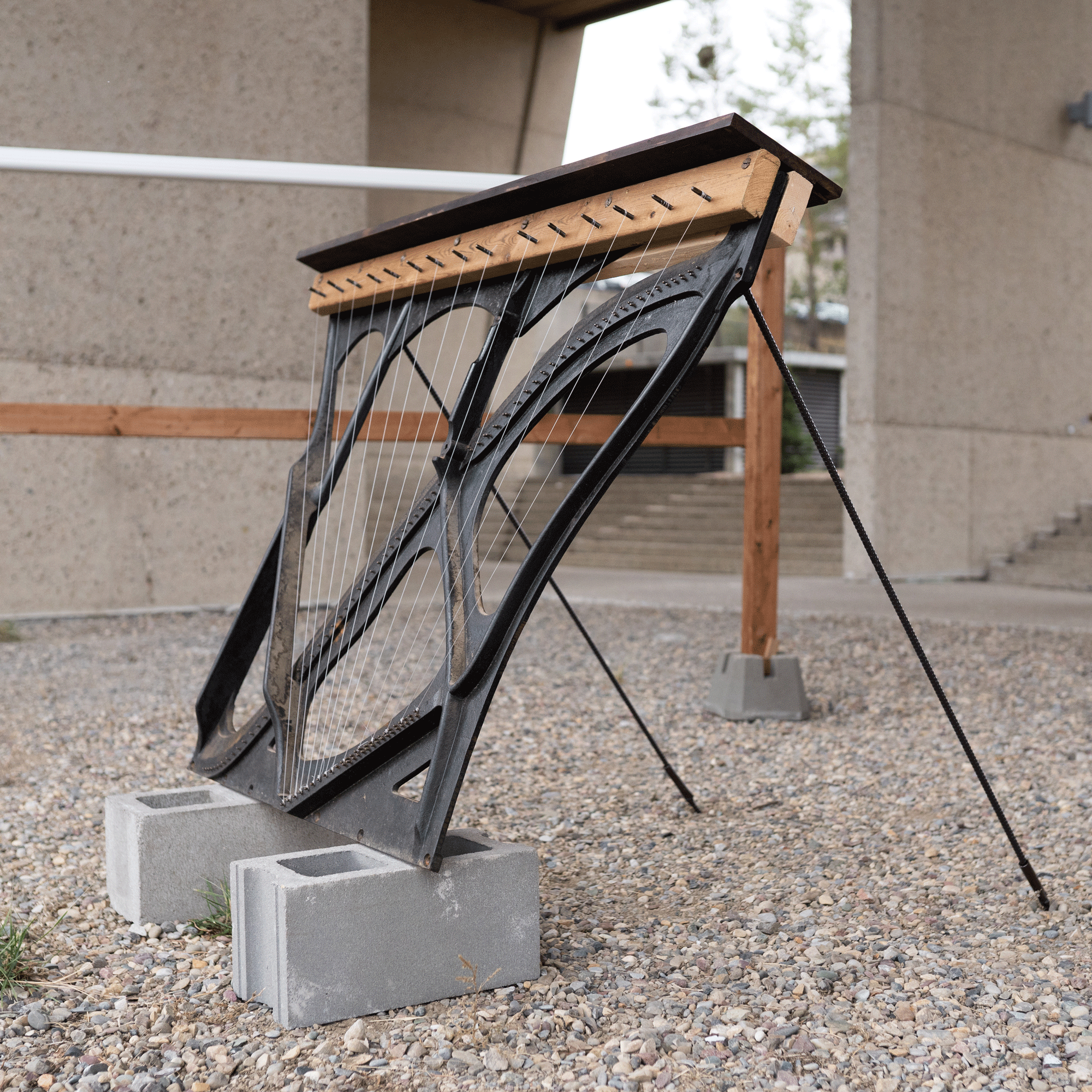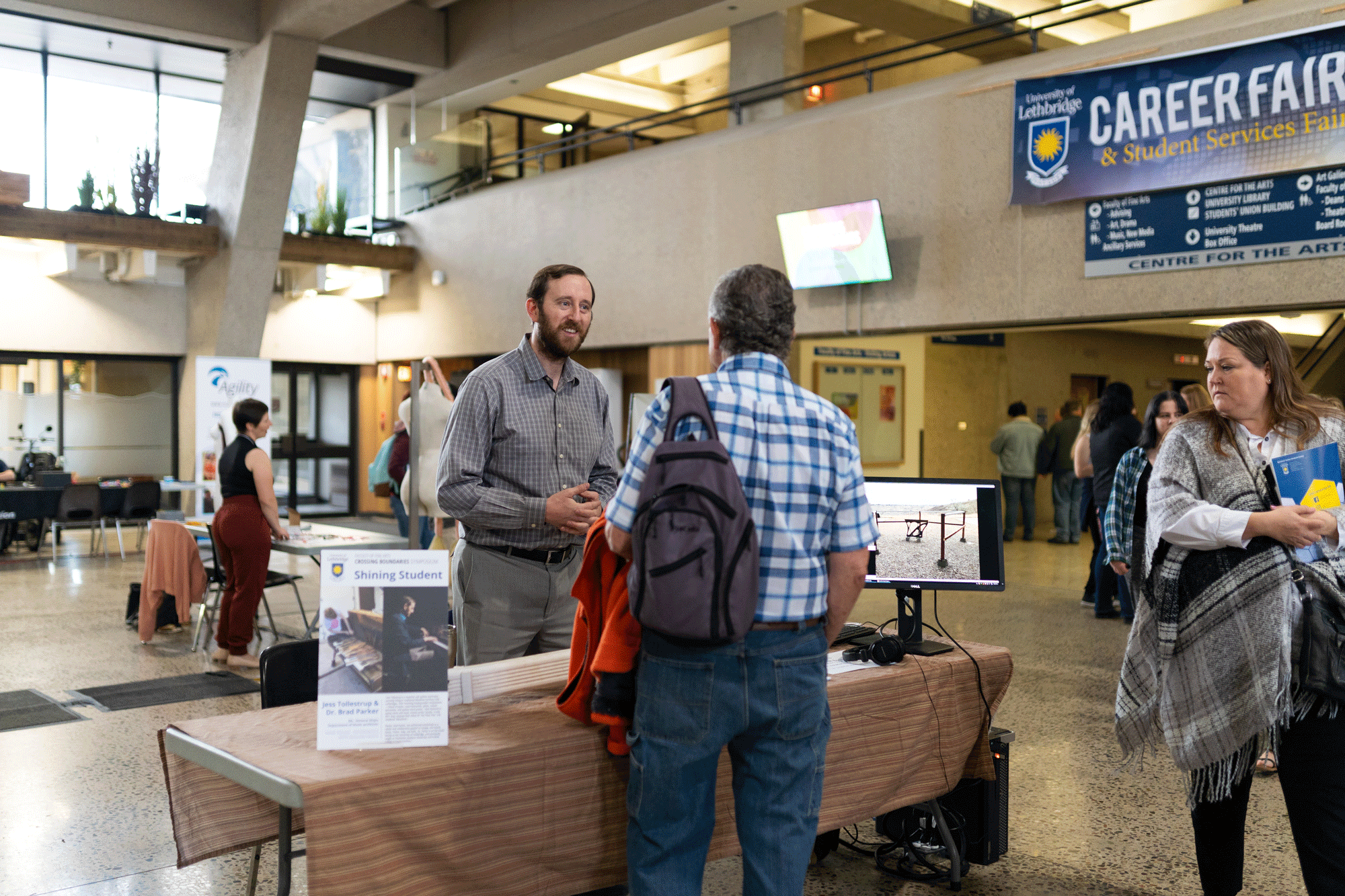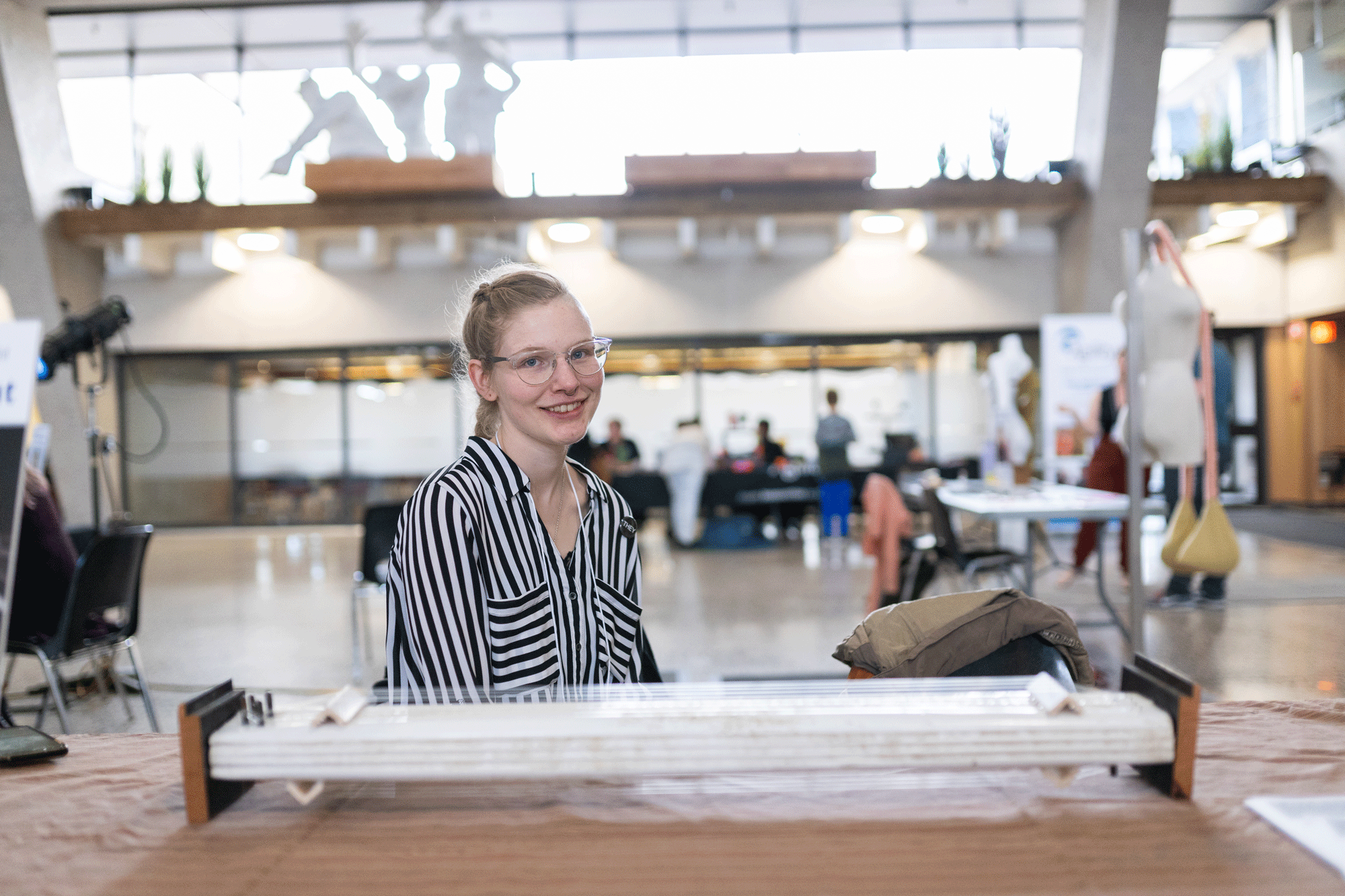The 2019 Crossing Boundaries Symposium highlighted research and developments in Fine Arts including presentations from faculty, alumni and students. With the mission of establishing new and emerging innovators from the creative fields with the community, activate cultural discourse and dialogue across disciplines, and to showcase the diversity and interdisciplinary nature of the professional creative world, Crossing Boundaries inspired a creative pairing, between faculty and student, music and nature.
Music faculty member Bradley Parker and undergraduate student Jess Tollestrup found a shared research interest when diving deeper into a piece of piano music and teamed up to create an Aeolian Harp to present at Crossing Boundaries.
What is an aeolian harp, and what motivated you to build one?
Brad: An Aeolian Harp is also known as a "Wind Harp". It is a stringed instrument that sings/hums when the wind blows across the strings. They are similar in function to wind chimes in that they can create pleasing, atmospheric sounds when the wind blows. Jess was studying piano with me, and for repertoire we picked a piece called "Aeolian Harp" by Henry Cowell. He is best known for pieces that require the performer to make sounds in unusual ways, for example, strumming/plucking the strings, playing on the keyboard with your forearm. We did some research about the Aeolian Harp, in order to better understand this piece of unusual piano music. We talked about building one so we could investigate the sounds it produced, and the project seemed to fit into the realm of the Crossing Boundaries Symposium.

How did you, an undergraduate student and a new to Lethbridge music faculty member, connect and decide to pursue this project together?
Jess: At the same time I was studying piano with Brad, learning Aeolian Harp by Henry Cowell, I was also taking a physics course and was fascinated by the physics of sound. We both agreed it would be exciting and fun to try to build our own Aeolian Harp, and it just evolved from there.
Brad: Lethbridge is a windy place, so such an instrument seemed fitting here. We wanted to make a statement and create something beautiful and meaningful, and we were interested in the physics behind it - hoping to be able to understand it well enough to be able to make pleasing sounds with the instrument.
What was the end result of this project?
Jess: Crossing Boundaries was the culminating activity. That said, I think there's tons of potential to continue experimenting and creating with these harps.
Brad: We had seven different harps in the installation, and each of us has some of them. I would like to get some more audio recordings of the harps and continue to try to create combinations that produce pleasing harmonies. I am intrigued by the idea of creating music that combines the recorded harps with live piano.


As an undergraduate student, what was it like working on this project one-on-one with a faculty member?
Jess: I felt like we were equal research partners. Both of us had steep learning curves when it came to using power tools to hack apart a piano to construct aeolian harps! That said, Brad's position as faculty as well as his extensive music, music history, and music theory knowledge also made this an incredible learning opportunity for me. I'm grateful that Brad was open to taking on such a big co-curricular project.
Why is it a great opportunity for faculty members to include undergraduate students in their research and creative activities?
Brad: Speaking from experience, I'd say that it is easy to get into a mindset that school is school, and the real world is something else entirely. When I was a student, I don't think I ever would have thought about doing a co-curricular project of this magnitude just for fun. In this case, we were equal research partners in this project - I just happened to have been Jess's piano teacher when we started talking about it.